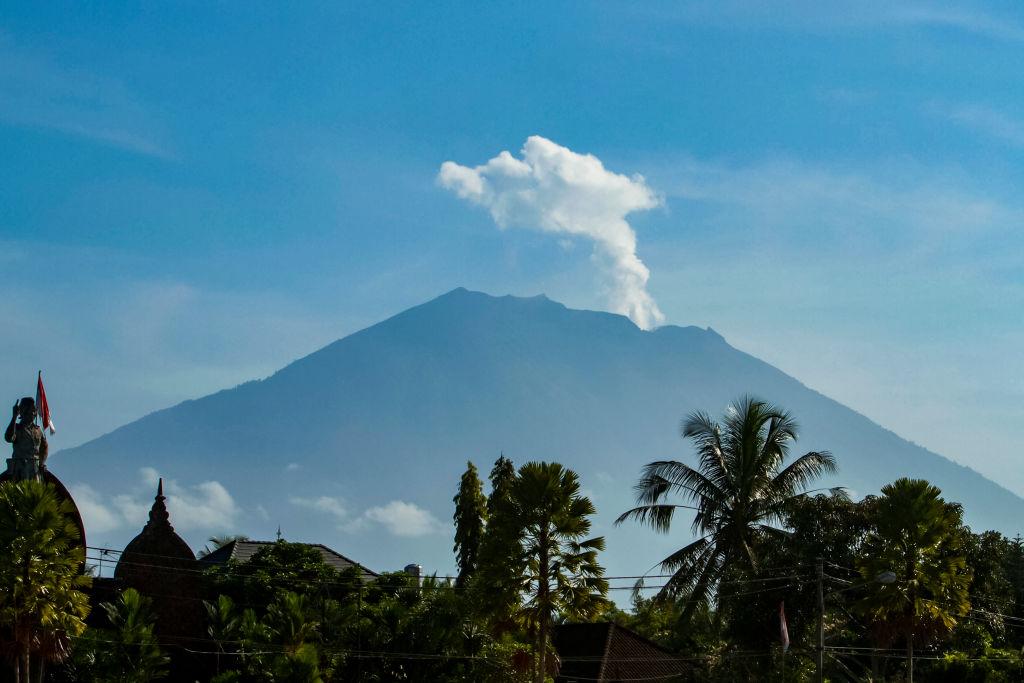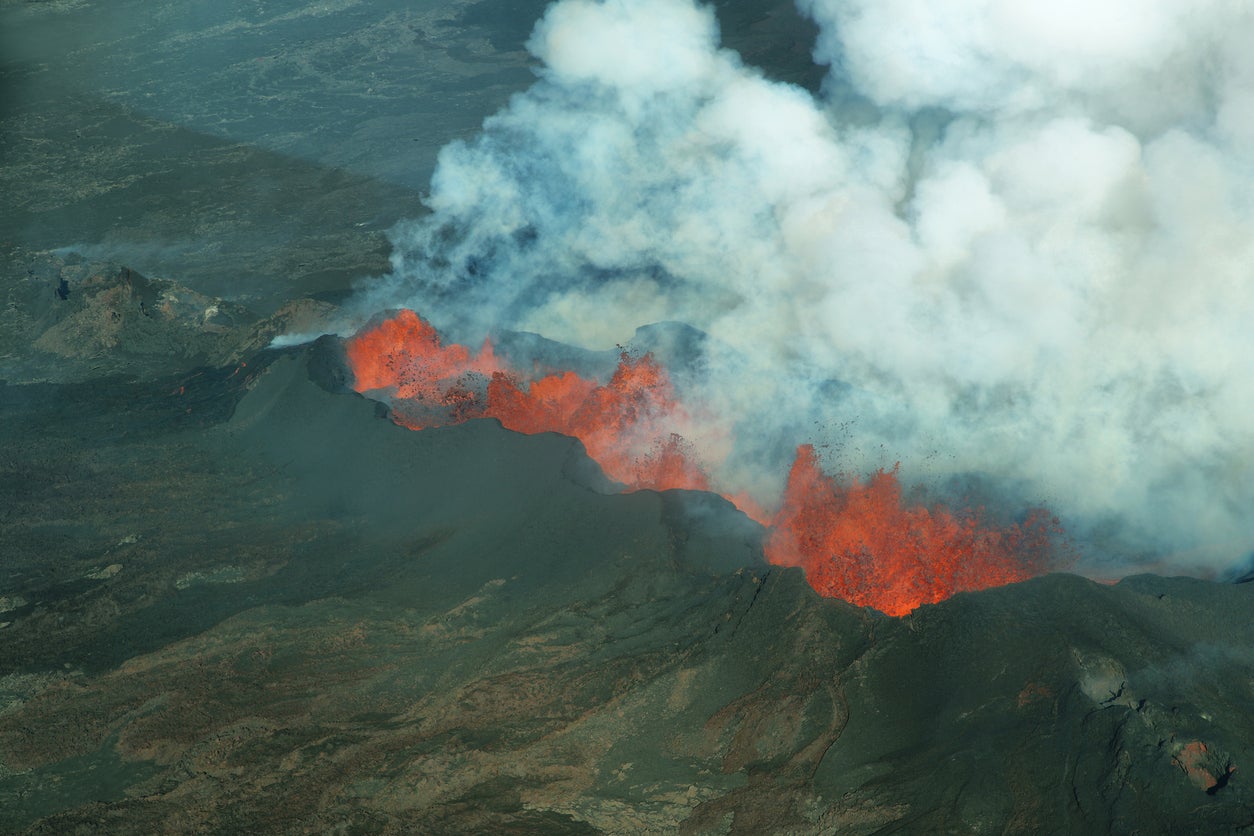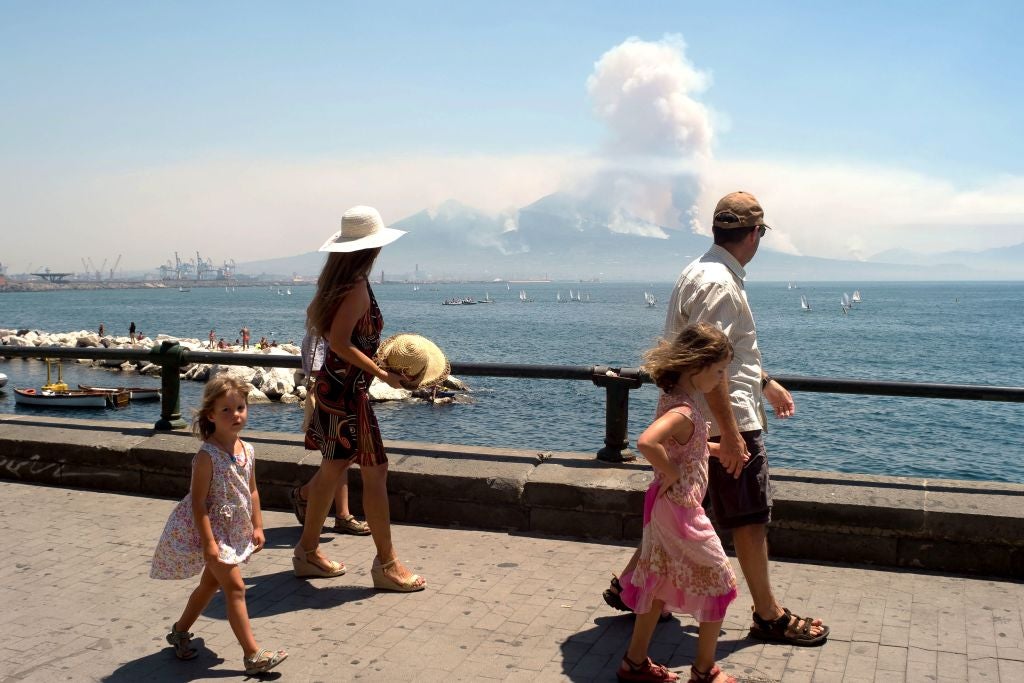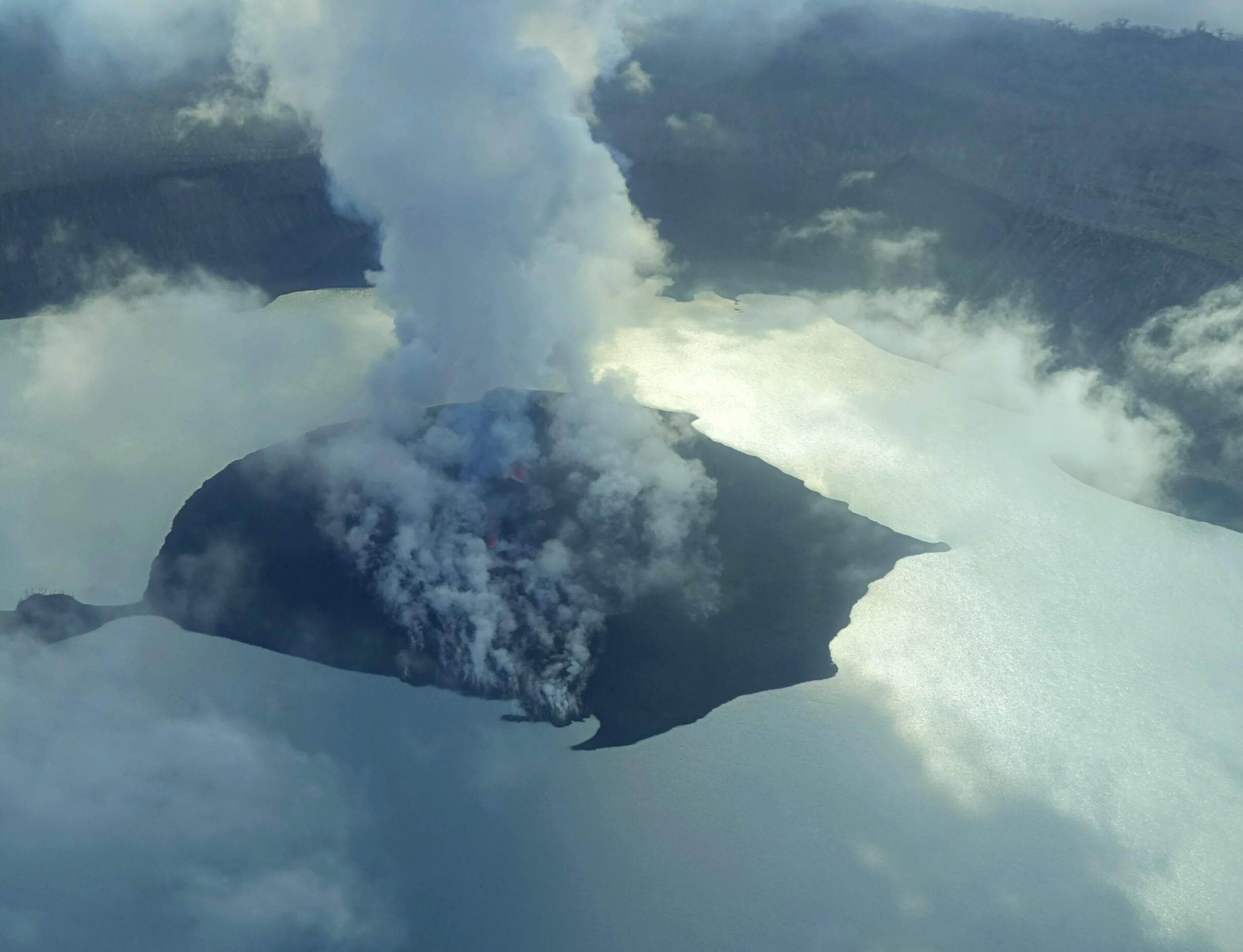Which volcanoes are about to erupt?
From Mount Vesuvius to Iceland's biggest volcano, we look at the likelihood of an eruption - and a disruption of your travel plans

Your support helps us to tell the story
From reproductive rights to climate change to Big Tech, The Independent is on the ground when the story is developing. Whether it's investigating the financials of Elon Musk's pro-Trump PAC or producing our latest documentary, 'The A Word', which shines a light on the American women fighting for reproductive rights, we know how important it is to parse out the facts from the messaging.
At such a critical moment in US history, we need reporters on the ground. Your donation allows us to keep sending journalists to speak to both sides of the story.
The Independent is trusted by Americans across the entire political spectrum. And unlike many other quality news outlets, we choose not to lock Americans out of our reporting and analysis with paywalls. We believe quality journalism should be available to everyone, paid for by those who can afford it.
Your support makes all the difference.In recent months there have been a number of stories predicting the eruption of volcanoes around the world. But how likely are these eruptions - and how will they affect your travel plans? We asked top volcanologist Dr Pete Rowley from the University of Portsmouth how likely any disruption is, and whether you should be rebooking any flights.
La Palma: Cumbre Vieja
Experts on La Palma in the Canary Islands were recently told to monitor activity on Cumbre Vieja, after it saw 400 tremors in just 15 hours over the course of a weekend. The volcano (meaning "Old Summit") had previously had major eruptions in 1949 and 1971, though the latest tremors led to concerns that an eruption might lead to an earthquake or possible tsunami.
Dr Rowley says: "This has been active in the 1970s, and has had a pretty active history for at least 6,000 years. The eruptions have not been enormous.
The bigger risk that gets talked about is the potential for a massive landslide where an entire sector of the island collapses into the sea. These are features of many volcanic islands and there has been a lot of discussion over the last 30 years over their potential for destructive tsunami generation.
However, there's little if any evidence of tsunami deposits away from the islands so the current consensus is that the risk is pretty minimal."
Tenerife: Mount Teide
The Canary Islands' volcanoes have been getting a lot of attention of late. As well as Cumbre Vieja, recent reports suggest that Tenerife's Mount Teide may also be about to erupt, with concerns raised following an increase in seismic activity. However, Involcan, the Islands' body monitoring volcanic activity, was quick to reassure residents that they had nothing to fear.
Dr Rowley says: "Last active in 1909, the vast majority of its activity is as lava flows, which pose little hazard to populations even on the island. Teide is a cone which sits within the much larger Las Cañadas caldera (crater), which is capable of much larger eruptions. It has had several very large eruptions over the last quarter of a million years, but there is no evidence of caldera-related activity that I am aware of."
Iceland: Bárðarbunga
The eruption of Eyjafjallajökull in Iceland in 2010 set tongues twisting and airlines into chaos as thousands of flights were grounded due to the subsequent cloud of ash that swept over Europe. Recent reports, however, have focused on Bárðarbunga, the country's biggest volcano. Unlike the eruption of Eyjafjallajökull, Bárðarbunga's eruption in 2015 resulted in relatively minor disruption, as reported in Science Alert, with its subglacial location causing floods.

Locals have raised concerns about the increased seismic activity this year, but the Iceland Meteorological Office's colour code system ranks every volcano in the country at green, meaning the volcano is a "in a normal, non-eruptive state", and Páll Einarsson of the University of Iceland told The Independent: "There are no indications of an imminent eruption of Bárðarbunga volcano. These volcanoes usually erupt on a very short notice, several hours."
Dr Rowley says: "Bárðarbunga is a really fascinating case. It was a huge eruption [in 2015] but from a fissure; magma escaped the reservoir along a long vertical fissure which eventually reached about 40km from the volcano it started beneath. Over six months, the fissure released enough lava to cover 85 square km of land. It's a really nice example of how explosivity tends to increase hazard; the Bárðarbunga eruption was not explosive, yet released far more material than the much more impactful Eyjafjallajökull eruption a few years before."
So, while it might be explosive, it's unlikely Bárðarbunga is going to do much damage any time soon.
Italy: Mount Vesuvius

In October 2016, Italian authorities drew up plans to evacuate 700,000 citizens due to an imminent eruption of Mount Vesuvius. Their fears didn't come to pass, though scientists in the region continue to monitor its activity as well as that of 'supervolcano' area Campi Flegrei.
Dr Rowley says: "Vesuvius is a really rather active volcano. It's famed for its eruption that wiped out Pompeii and Herculaneum, but it's had something like 50 eruptions since then. Most of them were small-scale lava-forming events, but there have been some pretty big explosive eruptions too. With Naples next door it poses a quite substantial risk to the local population, so is carefully monitored."
So, while that's understandably a concern for Naples residents, constant monitoring should reassure visitors to southern Italy that if your flight hasn't been cancelled, an eruption isn't imminent.
Bali: Mount Agung
After strong recent seismic activity that saw an area around it evacuated, the island primed for an imminent eruption and a drop in tourist numbers, Bali's Mount Agung had its alert status downgraded recently. Is it safe to go back?
Dr Rowley says: "We know it's erupted at least three times in the last 300 years (the last time in 1963). The last two eruptions have been quite significant VEI 5 events, so about on the scale of Mt St Helens in 1980.
From the monitored activity seen over the last month or so there is definitely strong evidence that there is a sizeable amount of magma moving around below the volcano. There's been a lot of seismic activity… however, the alert level on the volcano was brought down last week to a 3 (on a scale of 1-4, 4 being eruption potentially imminent or in progress). There's really no way to tell whether that is now going to quieten down as whatever caused that activity settles down, or whether this is simply the first stage in a more long-term episode."
Don't be put off from visiting Bali, then, but be alert to the situation and prepared for possible flight disruption.
Vanatu: Manaro

The small island nation of Vanuatu - roughly halfway between Australia and Hawaii in the South Pacific - is considered one of the world's most disaster-prone places, according to Phys.org. Authorities in the country recently declared a state of emergency on Ambae island amid fears of an eruption, with 7,000 people forced to flee their homes.
Dr Rowley says: "This is not one I'm hugely familiar with, but it's not a huge volcano. The risk is mainly that the island is small, so any activity puts that population at risk.
It's got a very intermittent eruptive history, with only a handful of events known in the last 1000 years."
The verdict
In short, says Dr Rowley, experts have things in hand wherever you are, so there's no need to panic. And since tourism is a major part of the economy in all these locations, it harms the local community to cry off your visit. So keep booking those flights, but keep an eye on the news and the advice from the Foreign Office, and stay aware. Oh, and although not all policies cover erupting volcanoes, make sure you have travel insurance.
Join our commenting forum
Join thought-provoking conversations, follow other Independent readers and see their replies
Comments